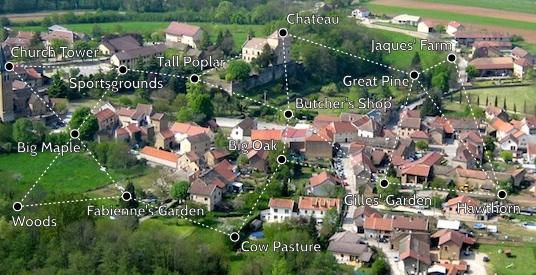
4 minute read
Message routing
from Eloquent Javascript
by Drashyn Lord
“Who can wait quietly while the mud settles? Who can remain still until the moment of action?” —Laozi, Tao Te Ching
Chapter 11 Asynchronous Programming
Advertisement
The central part of a computer, the part that carries out the individual steps that make up our programs, is called the processor. The programs we have seen so far are things that will keep the processor busy until they have finished their work. The speed at which something like a loop that manipulates numbers can be executed depends pretty much entirely on the speed of the processor.
But many programs interact with things outside of the processor. For example, they may communicate over a computer network or request data from the hard disk—which is a lot slower than getting it from memory.
When such a thing is happening, it would be a shame to let the processor sit idle—there might be some other work it could do in the meantime. In part, this is handled by your operating system, which will switch the processor between multiple running programs. But that doesn’t help when we want a single program to be able to make progress while it is waiting for a network request.
Asynchronicity
In a synchronous programming model, things happen one at a time. When you call a function that performs a long-running action, it returns only when the action has finished and it can return the result. This stops your program for the time the action takes.
An asynchronous model allows multiple things to happen at the same time. When you start an action, your program continues to run. When the action finishes, the program is informed and gets access to the result (for example, the data read from disk).
We can compare synchronous and asynchronous programming using a small example: a program that fetches two resources from the network and then combines results.
In a synchronous environment, where the request function returns only after it has done its work, the easiest way to perform this task is to make the requests
186
one after the other. This has the drawback that the second request will be started only when the first has finished. The total time taken will be at least the sum of the two response times.
The solution to this problem, in a synchronous system, is to start additional threads of control. A thread is another running program whose execution may be interleaved with other programs by the operating system—since most modern computers contain multiple processors, multiple threads may even run at the same time, on different processors. A second thread could start the second request, and then both threads wait for their results to come back, after which they resynchronize to combine their results.
In the following diagram, the thick lines represent time the program spends running normally, and the thin lines represent time spent waiting for the network. In the synchronous model, the time taken by the network is part of the timeline for a given thread of control. In the asynchronous model, starting a network action conceptually causes a split in the timeline. The program that initiated the action continues running, and the action happens alongside it, notifying the program when it is finished.
synchronous,singlethreadofcontrol
synchronous, two threads of control
asynchronous
Another way to describe the difference is that waiting for actions to finish is implicit in the synchronous model, while it is explicit, under our control, in the asynchronous one.
Asynchronicity cuts both ways. It makes expressing programs that do not fit the straight-line model of control easier, but it can also make expressing programs that do follow a straight line more awkward. We’ll see some ways to address this awkwardness later in the chapter.
Both of the important JavaScript programming platforms—browsers and Node.js—make operations that might take a while asynchronous, rather than relying on threads. Since programming with threads is notoriously hard (understanding what a program does is much more difficult when it’s doing multiple things at once), this is generally considered a good thing.
187
Crow tech
Most people are aware of the fact that crows are very smart birds. They can use tools, plan ahead, remember things, and even communicate these things among themselves.
What most people don’t know is that they are capable of many things that they keep well hidden from us. I’ve been told by a reputable (if somewhat eccentric) expert on corvids that crow technology is not far behind human technology, and they are catching up.
For example, many crow cultures have the ability to construct computing devices. These are not electronic, as human computing devices are, but operate through the actions of tiny insects, a species closely related to the termite, which has developed a symbiotic relationship with the crows. The birds provide them with food, and in return the insects build and operate their complex colonies that, with the help of the living creatures inside them, perform computations.
Such colonies are usually located in big, long-lived nests. The birds and insects work together to build a network of bulbous clay structures, hidden between the twigs of the nest, in which the insects live and work.
To communicate with other devices, these machines use light signals. The crows embed pieces of reflective material in special communication stalks, and the insects aim these to reflect light at another nest, encoding data as a sequence of quick flashes. This means that only nests that have an unbroken visual connection can communicate.
Our friend the corvid expert has mapped the network of crow nests in the village of Hières-sur-Amby, on the banks of the river Rhône. This map shows the nests and their connections:
In an astounding example of convergent evolution, crow computers run JavaScript. In this chapter we’ll write some basic networking functions for them.
188


